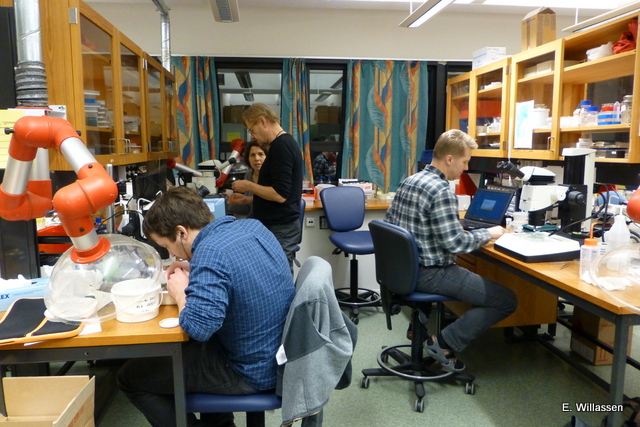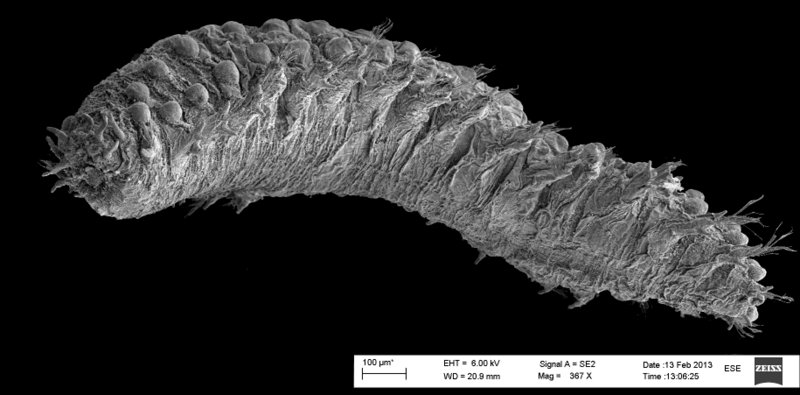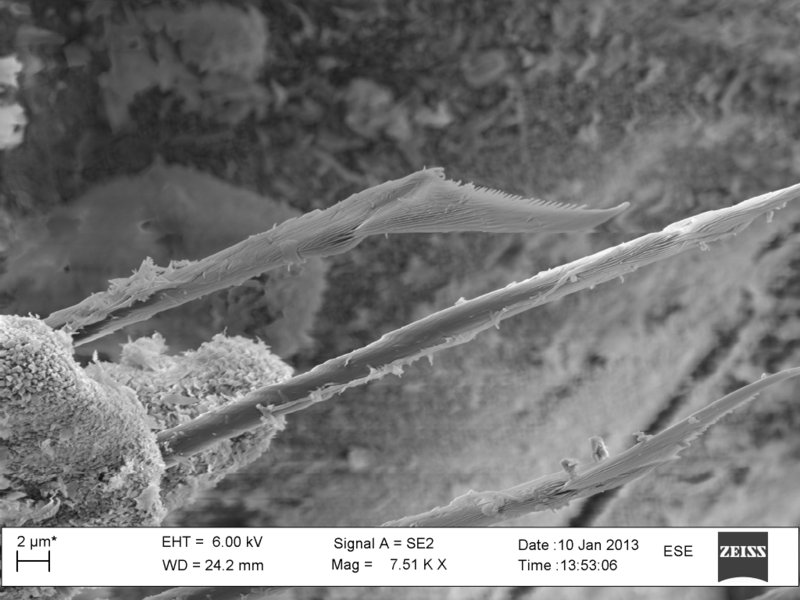We recently rounded 90.000 specimens in our scientific collections, and since # 90 000 is such a good representative of what we are currently working on, we’re presenting it here.
This is a Cumacea, or hooded shrimp. It was collected by the MAREANO project. It was then identified by a taxonomist on a workshop arranged by the Department of Biology (UoB), the University Museum and MAREANO. It was then implemented in the Museum’s scientific collection, and chosen to be used as a DNA voucher for the NorBOLproject (Norwegian Barcode of Life). Here it will be part of a comprehensive library of standardized DNA sequences (barcodes) which will serve as a reference resource for the research and management of biodiversity in Norway.




